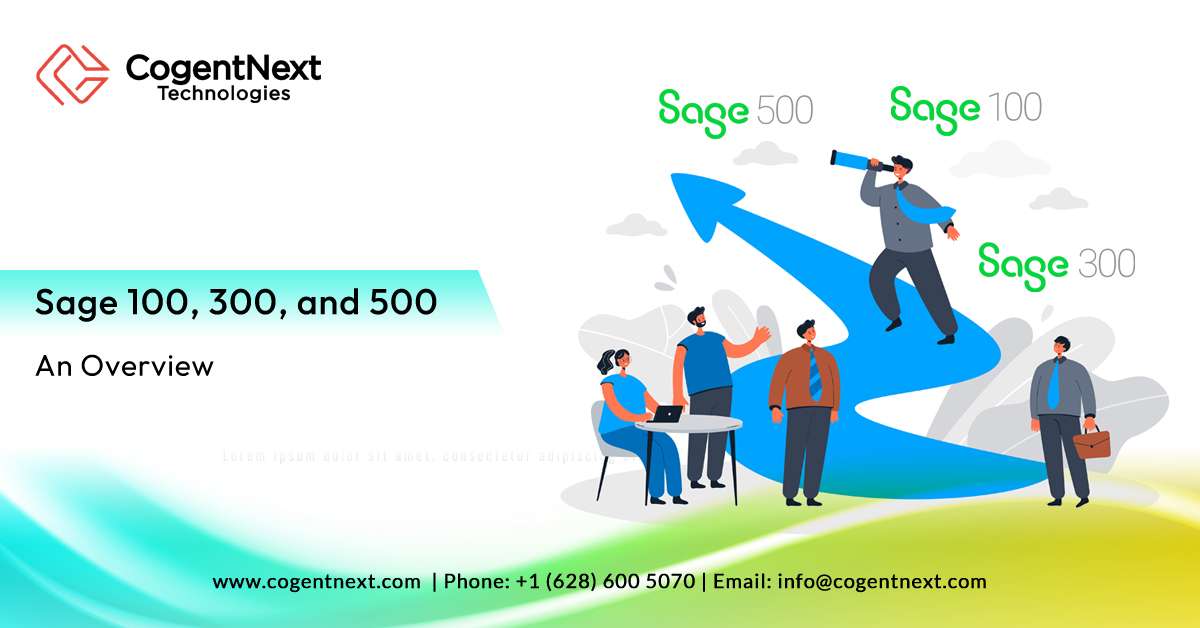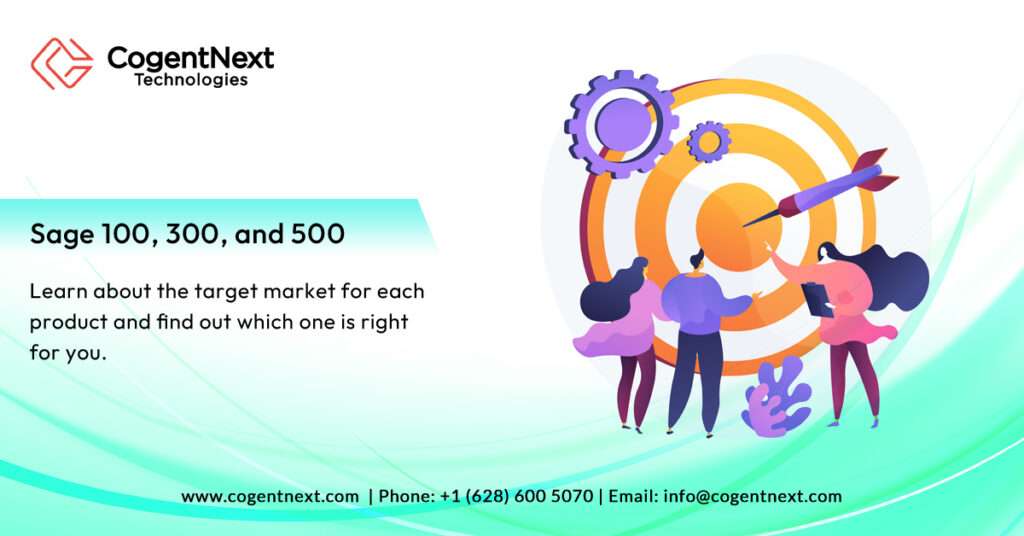
Sage 100, 300, and 500: An Overview
With a long-standing presence in the accounting and ERP industry since 1981, Sage offers a range of popular solutions, including Sage 100, Sage 300, and Sage 500. This sage 100 300 and 500 overview highlights their extensive history and the enduring loyalty of their customer base.
Today’s modern ERP software is trending toward the cloud. And Sage has powerful solutions in that arena, the venerable Intacct and X3 being at the forefront of their cloud strategy. However, the lion’s share of the work through the decades has been done with traditional on-premises software, and for some, leveraging the advantages of both worlds has been the perfect combination to meet their needs.
Sage 100, 300, and 500 are on-premises solutions that many rely on. While there are myriad variations on these three products, we’re going to discuss the basic differences and focuses of these software systems so you can see which one might be right for your business.

Sage 100 300 and 500 Overview
Sage 100
Aimed squarely at those businesses that are moving up from entry-level solutions such as QuickBooks or Sage 50, Sage 100 is ideal for growing organizations as it has a lot of capabilities for businesses that don’t have international operations. It also allows a great deal of customization, as well as a robust community of 3rd party add-ons.
The current version of the product is known as Sage 100cloud, highlighting the cloud connectivity of this on-premises solution, helping its users leverage the advantages of locally installed software and cloud data storage and integration.
Sage 100cloud is used in a wide range of industries, such as Manufacturing, Wholesale Distribution, Professional Services, Construction, Chemicals, Food & Beverage, and Nonprofits.
The base offering includes bookkeeping, invoicing, e-billing to accept customer payments online, accounts receivable, accounts payable, general ledger, bank transaction feeds, bank reconciliation, and financial reports. Custom reports can be created with Crystal Reports.
There are a host of Sage products that natively integrate with Sage 100cloud, such as:
- Sage 100cloud Payroll
- Sage CRM for customer relationship management
- Sage Inventory Advisor
- Sage Intelligence (for business intelligence)
- Sage Operations Management
- Sage Alerts and Workflow
- Sage Fixed Assets
Sage 300
Sage 300 is a broader, more robust solution designed to meet the needs of companies with more advanced requirements, such as those with multiple entities and who work with multiple currencies. Now known as Sage 300cloud, it manages finance, accounting, operations, inventory, and distribution. It provides cash flow management, automated bank reconciliation, accounts receivable, inventory management, accounts payable, multi-currency, general ledger, and financial reporting. Multi-company organizations can easily generate consolidated company financial statements to comply with reporting regulations.
Sage 300 has been especially popular in Construction, where the industry-specific Sage 300 CRE is noted as ‘the most widely used construction management software in the industry.’ However, it’s also got a strong foothold in Manufacturing, Wholesale Distribution, Chemical Manufacturing, Food & Beverage, Professional Services, and Nonprofits.
There are a great many options to expand on Sage 300’s functionality. First, you have several enhancements from within the Sage family:
- Sage Fixed Assets
- Sage Timeslips
- Sage CRM
- Sage People (cloud), CakeHR (cloud), and Sage HRMS (on-premises) for human resources
- Sage Intelligence Reporting
Additionally, there are many 3rd party add-ons to broaden its capabilities. For example, there are e-commerce integrations that allow current users to expand their operations online and keep their systems up to date in real time.
Sage 500
A powerful solution that handles the most complex accounting and business management scenarios, Sage 500 has provided structure to many large organizations in industries such as Distribution and Manufacturing, among many others. However, it is no longer receiving major new features. While Sage is not forcing users to upgrade, their releases have switched to usability and security patch updates. This does mean that customers have the benefit of continued support for now, and there is no hurry to make changes. However, over time, existing users of this enterprise-level solution will need to evaluate their circumstances to decide when they should migrate to a more modern ERP solution.
Which Solution Is Right for You?
Sage has a broad product offering, with powerful solutions to meet your needs, no matter how simple or complex they may be. Could Sage 100 or 300 be the right fit for you? Or will you need the power and flexibility of a true cloud solution, such as Intacct? Contact us today for more information we ll help you find the best fit for your organization.
By Chandra Subramanian, CogentNext Technologies
